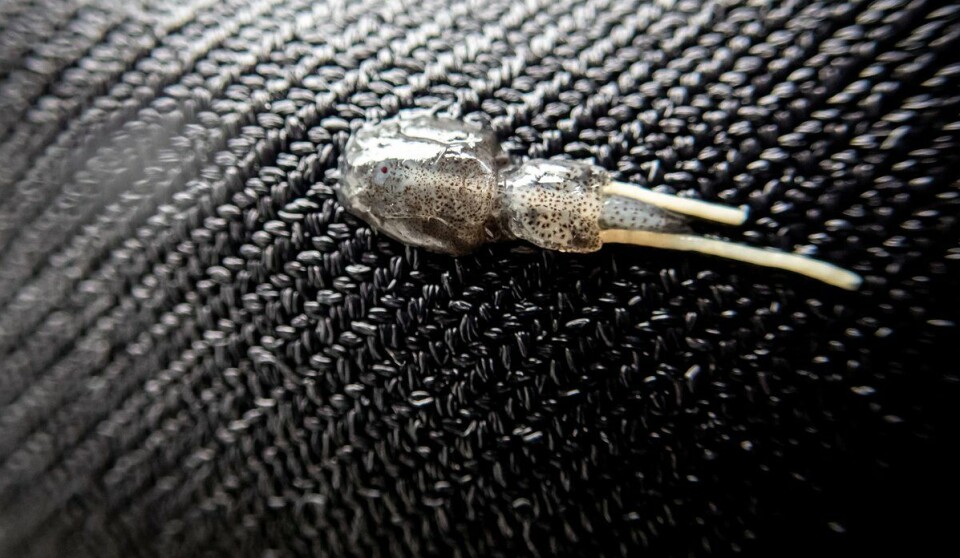
Brackish water works well for lice removal
Method is effective but fish shouldn’t be treated for too long, a study in Norway has concluded
Scientists at Norway’s Institute of Marine Research have reported good results by using filtered sea water to remove sea lice from farmed salmon.
Salmon lice (Lepeophtheirus salmonis) are a major headache for salmon farmers. But the louse has a disadvantage. It has adapted to life in salt water and does not thrive when the salt level drops below a certain level. It therefore does not like fresh water and brackish water.
When wild salmon reach sexual maturity, they return to spawn in the same river in which they hatched.
“But we have seen that sea trout that are heavily infected with salmon lice return to the river earlier than expected. We think the reason for this earlier return home is due to the fresh water’s de-lousing effect,” said IMR researcher Samantha Bui.
Turns seawater into brackish water
The same effect can also be utilised by treating lice with brackish water at salmon farms. But transporting large quantities of fresh water to the aquaculture facilities is neither easy nor particularly sustainable.
“That is why nanofilter technologies have been developed to desalinate the water in wellboats out at the facilities,” said Bui.
With this method, ions such as sodium and chlorine are removed from the water. The result is water that is slightly different chemically and with a slightly higher salt level than fresh water. Almost like brackish water.
Between 30 minutes and 48 hours
Delousing with brackish water has already been used by the industry, but how does the treatment affect fish welfare? And what is the optimal length of the bath treatment?
To get answers to these questions, scientists carried out an experiment at IMR’s research station in Matre, Norway.
Salmon of 350 grams were first infected with salmon lice larvae that were then allowed to grow larger. The fish were then treated in a brackish water bath for periods ranging from 30 minutes to 48 hours. The number of lice was counted before and after the treatments. In addition, blood samples were taken from the fish to examine the blood composition and salt balance.
95% of the lice disappeared
Before treatment, there were an average of 13 lice per fish.
“After an hour in the brackish water, we saw that the number of lice on the fish had dropped steadily, and between one and three hours the number of lice dropped sharply,” said Bui.
After three hours of brackish water treatment, the number of lice was 5% compared to the levels before the treatment. In comparison, the number of lice in the control group in seawater remained at 85% of the levels before the treatment.
“So we saw that the brackish water was effective and removed the vast majority of lice in a shorter time than we had expected,” said Bui.
The results have recently been published in the report “Delousing Efficacy and Physiological Impacts on Atlantic Salmon of Freshwater and Hyposaline Bath Treatments”, which can be read here.
Super smart or not smart at all?
When 95% of the lice are removed, 5% of the lice remain on the fish.
“The smart thing about it is that you reduce the amount of lice in the cages and the lice larvae that are spread in the environment. But what is not smart at all is that you simultaneously favour the salmon lice on which the treatment does not work,” said researcher Rasmus Skern-Mauritzen.
In monitoring freshwater sensitivity, Norway’s Veterinary Institute has seen indications that there may be a tendency towards increased freshwater tolerance after freshwater treatments.
“It is worrying. But there is too much we don’t know about how that tolerance arises, is favoured and is spread for us to be able to say with certainty whether freshwater treatments are wise in the long term,” said Skern-Mauritzen.
The fish were stressed
The researchers also saw an immediate change in blood chemistry when the fish were placed in the brackish water, and this change lasted throughout the treatment.
When the researchers examined the salt balance, they also saw that the ion concentration decreased during the treatment because ions leave the blood and are replaced by water.
“Taken together, these results show that it is important to limit the length of treatment with fresh or brackish water,” said researcher Angelico Madaro.






















































